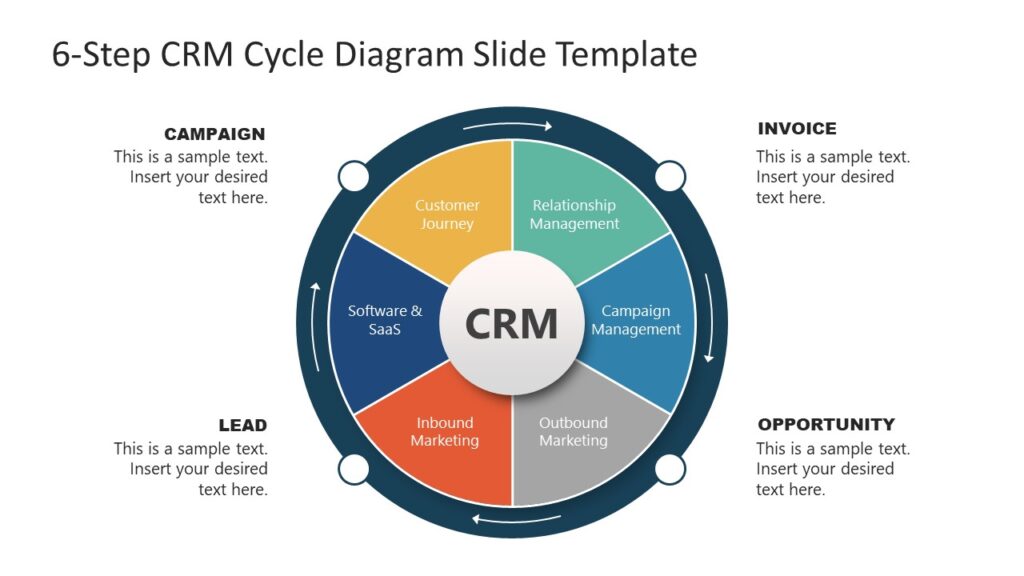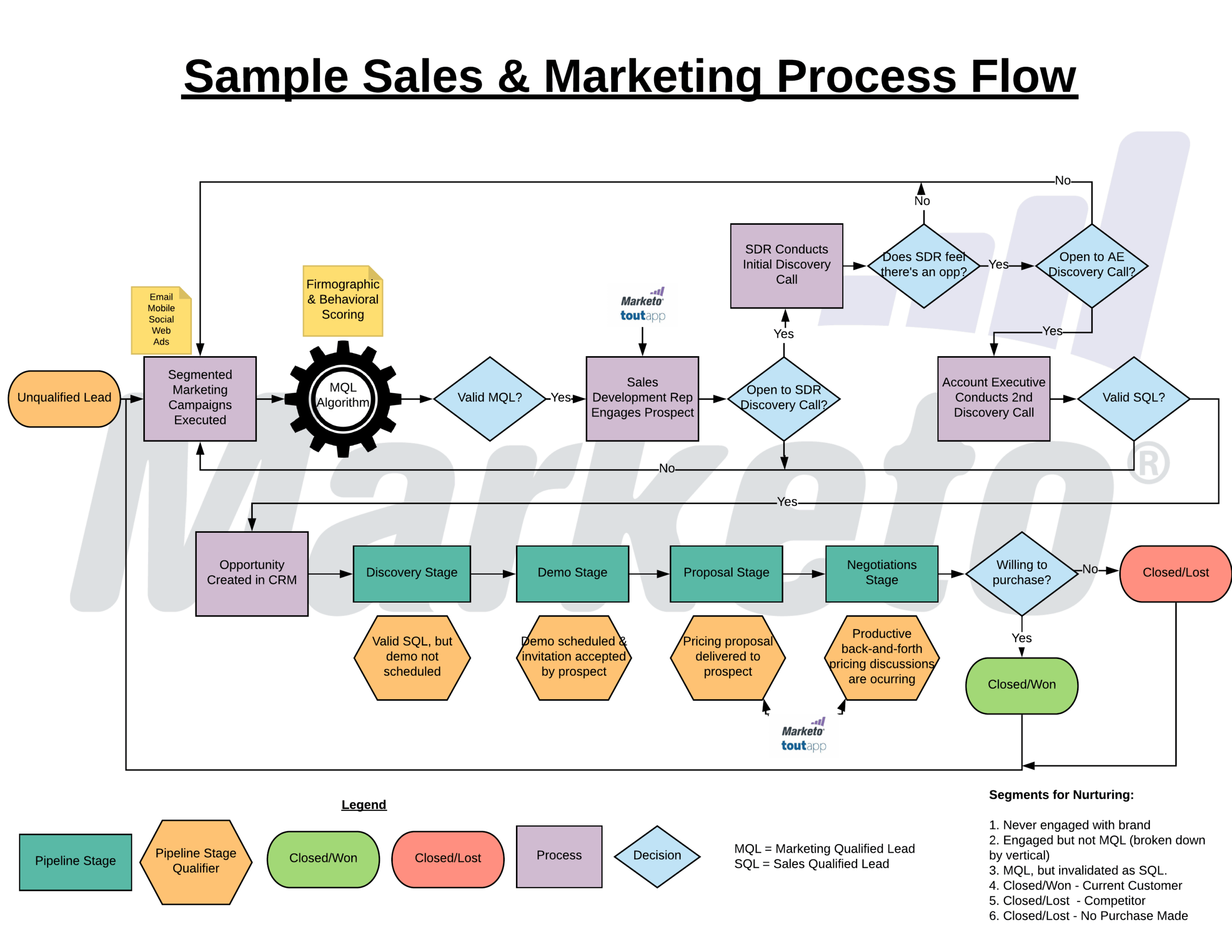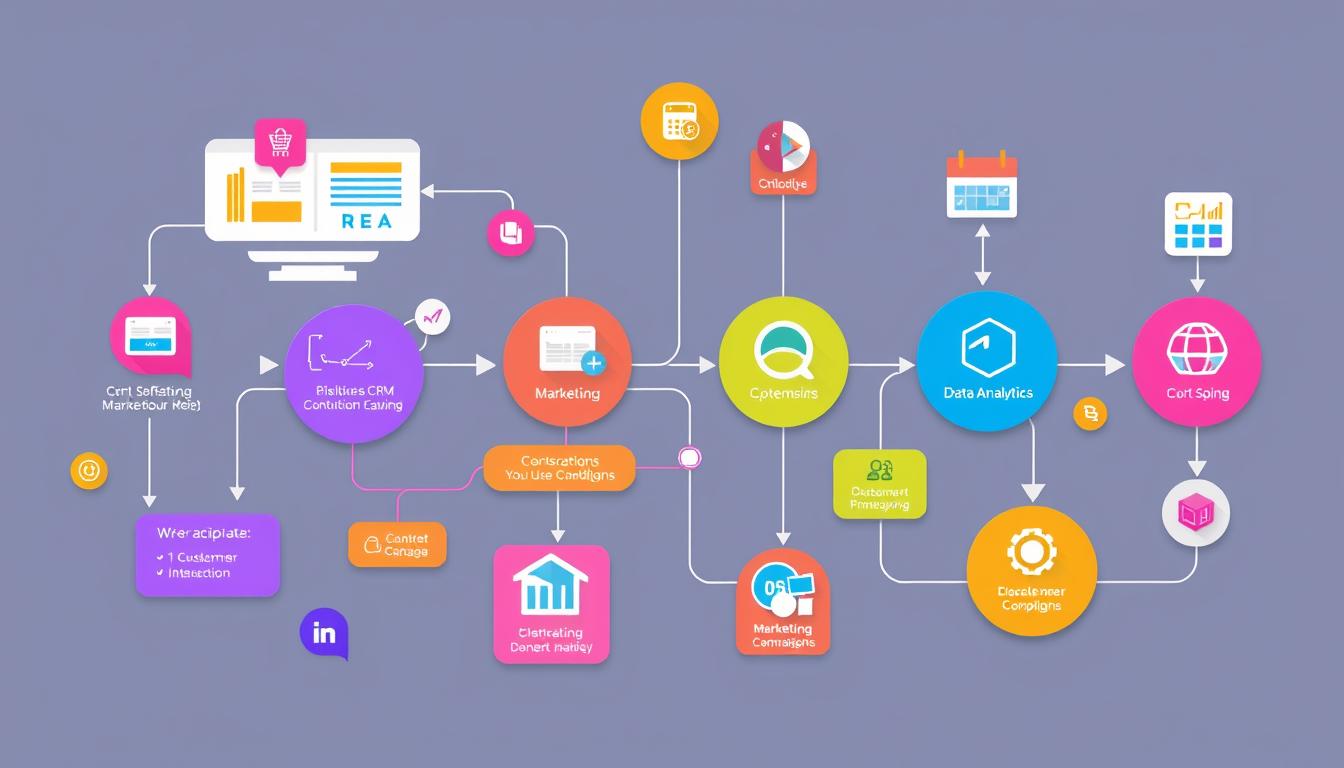
Introduction: The Power of a Well-Defined CRM Marketing Workflow
In the dynamic landscape of modern business, customer relationship management (CRM) has evolved from a mere database to a strategic powerhouse. At its core, CRM is about understanding your customers, anticipating their needs, and building lasting relationships. But, a CRM system alone is just a tool; its true potential is unleashed through meticulously crafted CRM marketing workflows. This guide delves deep into the world of CRM marketing workflows, providing a comprehensive understanding of their importance, how to build them, and best practices for optimization. Get ready to transform your business and elevate your customer engagement to new heights!
What is a CRM Marketing Workflow?
A CRM marketing workflow, simply put, is a series of automated steps designed to nurture leads, engage customers, and drive conversions within your CRM system. Think of it as a meticulously planned journey that guides your customers through the sales funnel. These workflows are triggered by specific actions or events, such as a lead filling out a form, a customer making a purchase, or a support ticket being submitted. The automation ensures that the right message is delivered to the right person at the right time, leading to increased efficiency and improved customer experience.
Imagine a world where your marketing efforts are perfectly synchronized, personalized, and responsive. That’s the power of CRM marketing workflows. They eliminate manual tasks, reduce human error, and free up your team to focus on strategic initiatives. By automating repetitive processes, you can significantly improve your team’s productivity and overall effectiveness. Think of it as the engine that drives your CRM strategy forward, ensuring that every customer interaction is optimized for success.
The Importance of CRM Marketing Workflows
In today’s competitive market, businesses need every advantage they can get. CRM marketing workflows provide several key benefits, making them essential for success:
- Improved Efficiency: Automate time-consuming tasks like lead qualification, email marketing, and customer segmentation, freeing up valuable time for your team.
- Enhanced Customer Experience: Deliver personalized and timely communications, building stronger relationships and fostering customer loyalty.
- Increased Conversions: Nurture leads effectively, guide them through the sales funnel, and ultimately drive more conversions.
- Data-Driven Insights: Track the performance of your workflows, identify areas for improvement, and make data-driven decisions.
- Scalability: Easily scale your marketing efforts as your business grows, without increasing your workload exponentially.
- Reduced Errors: Automate processes to minimize human error and ensure consistency across all customer interactions.
By implementing well-designed workflows, you can create a seamless and personalized experience for your customers, leading to higher engagement, increased sales, and improved customer retention. It’s a win-win situation for both your business and your customers.
Key Components of a CRM Marketing Workflow
A well-structured CRM marketing workflow typically comprises several key components. Understanding these components is crucial for designing effective workflows that achieve your desired outcomes:
- Triggers: These are the events that initiate the workflow. Common triggers include form submissions, email opens, link clicks, purchase history, or contact updates.
- Actions: These are the tasks that are performed when a trigger occurs. Actions can include sending emails, updating contact information, creating tasks, or adding leads to a specific segment.
- Conditions: Conditions act as filters, determining whether an action should be executed. For example, you might only send a specific email to customers who have purchased a particular product.
- Delays: Delays allow you to schedule actions to be performed at a specific time or after a certain period. This is useful for sending follow-up emails or nurturing leads over time.
- Goals: Goals help you track the performance of your workflows and measure their success. You can set goals such as achieving a certain conversion rate or increasing customer engagement.
By carefully considering each of these components, you can create workflows that are precisely tailored to your business needs and customer interactions. These components work together to create a cohesive and effective system that drives results.
Building Effective CRM Marketing Workflows: A Step-by-Step Guide
Creating effective CRM marketing workflows may seem daunting at first, but the process is quite straightforward. Here’s a step-by-step guide to help you get started:
- Define Your Goals: Before you start building any workflow, clearly define your objectives. What do you want to achieve? Are you trying to generate more leads, increase sales, improve customer retention, or something else? Having clear goals will guide your workflow design and help you measure its success.
- Identify Your Audience: Understand your target audience and their needs. Segment your customers based on demographics, behavior, and purchase history. This will allow you to personalize your messaging and tailor your workflows to specific customer segments.
- Map the Customer Journey: Visualize the customer journey from initial contact to becoming a loyal customer. Identify the key touchpoints and interactions along the way. This will help you determine the optimal steps for your workflows.
- Choose Your Triggers: Select the appropriate triggers for your workflows. Consider the actions or events that will initiate the workflow, such as a lead submitting a form or a customer making a purchase.
- Design Your Actions: Determine the actions that will be performed when a trigger occurs. This could include sending emails, updating contact information, creating tasks, or adding leads to a specific segment.
- Set Up Conditions: Use conditions to filter your actions and ensure that the right message is delivered to the right person. For example, you might only send a specific email to customers who have purchased a particular product.
- Implement Delays: Use delays to schedule actions to be performed at a specific time or after a certain period. This is useful for sending follow-up emails or nurturing leads over time.
- Test and Refine: Before launching your workflows, thoroughly test them to ensure they are working as expected. Make adjustments as needed and continuously refine your workflows based on performance data.
- Analyze and Optimize: Track the performance of your workflows and analyze the results. Identify areas for improvement and make data-driven decisions to optimize your workflows for maximum effectiveness.
By following these steps, you can build powerful CRM marketing workflows that drive results and transform your business.
Examples of CRM Marketing Workflows
To give you a better understanding of how CRM marketing workflows work in practice, here are some examples:
- Lead Nurturing Workflow: When a lead downloads a valuable piece of content, such as an ebook or a webinar recording, they are automatically added to a lead nurturing workflow. This workflow sends a series of emails over a period of time, providing valuable information, educating the lead about your products or services, and eventually guiding them towards a sales conversation.
- Welcome Email Series: When a new customer signs up for your product or service, they are automatically added to a welcome email series. This series includes a welcome email, a thank-you email, and a series of emails that introduce the customer to your product or service, provide helpful tips, and encourage them to explore your offerings.
- Abandoned Cart Recovery Workflow: When a customer adds items to their shopping cart but doesn’t complete the purchase, they are automatically added to an abandoned cart recovery workflow. This workflow sends a series of emails reminding the customer about the items in their cart, offering a discount or incentive to complete the purchase, and ultimately recovering lost sales.
- Customer Onboarding Workflow: Once a customer makes a purchase, they can be placed into an onboarding workflow. This workflow provides helpful information about how to get started with your product or service, offers tips and tricks, and guides them through the initial setup process. This ensures customer success and reduces churn.
- Customer Feedback Workflow: After a customer interacts with your support team or purchases a product, a feedback workflow can be triggered. This workflow sends a survey or asks for feedback on their experience. This helps you gather valuable insights and improve your customer service and products.
These are just a few examples; the possibilities are endless. The key is to identify the specific needs of your business and your customers and then design workflows that address those needs.
Best Practices for CRM Marketing Workflows
To ensure your CRM marketing workflows are effective, consider these best practices:
- Personalize Your Messaging: Tailor your messages to specific customer segments and personalize them using their name, purchase history, and other relevant information.
- Segment Your Audience: Divide your customers into segments based on demographics, behavior, and purchase history. This will allow you to target your messages more effectively.
- Keep it Concise: Write clear, concise, and easy-to-understand messages. Avoid jargon and focus on providing value to your customers.
- Use Compelling Calls-to-Action (CTAs): Make it easy for your customers to take the desired action by including clear and compelling CTAs.
- Test and Optimize Regularly: Continuously test and optimize your workflows to improve their performance. A/B test different subject lines, content, and CTAs to see what resonates best with your audience.
- Track Your Results: Monitor the performance of your workflows and track key metrics such as open rates, click-through rates, and conversion rates. This will help you identify areas for improvement.
- Automate, But Don’t Overdo It: While automation is key, avoid sending too many emails or making the experience feel impersonal. Find the right balance between automation and human interaction.
- Ensure Compliance: Always comply with all relevant data privacy regulations, such as GDPR and CCPA.
- Keep it Updated: Regularly review and update your workflows to ensure they remain relevant and effective. Customer needs and market trends change over time.
By adhering to these best practices, you can maximize the effectiveness of your CRM marketing workflows and achieve your desired results.
Choosing the Right CRM System
The success of your CRM marketing workflows depends heavily on the CRM system you choose. Several factors should be considered when selecting a CRM system:
- Features and Functionality: Ensure that the CRM system offers the features and functionality you need, such as email marketing automation, lead scoring, segmentation, and reporting.
- Ease of Use: Choose a CRM system that is easy to use and navigate. This will make it easier for your team to adopt the system and build workflows.
- Integration Capabilities: Make sure the CRM system integrates with your existing tools and platforms, such as your email marketing platform, website, and social media channels.
- Scalability: Choose a CRM system that can scale with your business as it grows.
- Pricing: Consider the pricing options and choose a CRM system that fits your budget.
- Customer Support: Look for a CRM system that offers excellent customer support.
- Reviews and Reputation: Research the CRM system’s reviews and reputation to get an idea of its strengths and weaknesses.
Some of the popular CRM systems that offer robust workflow capabilities include:
- HubSpot CRM: Known for its user-friendliness and comprehensive marketing automation features.
- Salesforce: A powerful and customizable CRM system suitable for businesses of all sizes.
- Zoho CRM: An affordable and feature-rich CRM system with excellent workflow capabilities.
- Microsoft Dynamics 365: An integrated CRM and ERP solution for businesses that need advanced functionality.
- Pipedrive: A sales-focused CRM system with a strong emphasis on workflow automation.
The best CRM system for your business will depend on your specific needs and requirements. Take the time to research different options and choose the system that is the best fit for you.
Integrating CRM with Other Marketing Tools
To maximize the effectiveness of your CRM marketing workflows, it’s crucial to integrate your CRM system with other marketing tools. This will enable you to streamline your marketing efforts, gain a holistic view of your customers, and personalize your interactions. Here are some key integrations to consider:
- Email Marketing Platforms: Integrate your CRM with your email marketing platform to automate email campaigns, segment your audience, and track email performance.
- Social Media Management Tools: Integrate your CRM with social media management tools to manage your social media presence, track social media interactions, and engage with your customers on social media.
- Website Analytics Tools: Integrate your CRM with website analytics tools to track website activity, understand customer behavior, and personalize your website experience.
- Live Chat Software: Integrate your CRM with live chat software to provide real-time customer support, capture leads, and gather customer feedback.
- Marketing Automation Platforms: Integrate your CRM with marketing automation platforms to create sophisticated marketing campaigns, nurture leads, and track conversions.
By integrating your CRM with these tools, you can create a seamless and integrated marketing ecosystem that drives results.
Measuring the Success of Your CRM Marketing Workflows
To ensure your CRM marketing workflows are effective, it’s important to measure their success. Here are some key metrics to track:
- Open Rates: The percentage of emails that are opened by recipients.
- Click-Through Rates (CTR): The percentage of recipients who click on links in your emails.
- Conversion Rates: The percentage of recipients who complete a desired action, such as making a purchase or filling out a form.
- Lead Generation: The number of new leads generated through your workflows.
- Sales Revenue: The amount of revenue generated through your workflows.
- Customer Lifetime Value (CLTV): The predicted revenue a customer will generate throughout their relationship with your business.
- Customer Acquisition Cost (CAC): The cost of acquiring a new customer.
- Customer Retention Rate: The percentage of customers who remain customers over a specific period.
- Return on Investment (ROI): The profitability of your workflows.
By tracking these metrics, you can assess the performance of your workflows, identify areas for improvement, and make data-driven decisions to optimize your results. Regularly reviewing your data and making adjustments to your workflows based on the insights you gather is a crucial part of the process.
Troubleshooting Common CRM Workflow Issues
Even with careful planning, you may encounter issues with your CRM marketing workflows. Here are some common problems and how to troubleshoot them:
- Incorrect Triggers: Make sure your triggers are set up correctly and that they are triggering the workflows as expected.
- Email Delivery Issues: Check your email deliverability settings and ensure that your emails are not being marked as spam.
- Segmentation Errors: Verify that your audience segments are defined correctly and that your messages are being delivered to the right people.
- Workflow Logic Errors: Review the logic of your workflows and ensure that the steps are executed in the correct order.
- Technical Issues: Troubleshoot any technical issues, such as integration problems or system errors.
- Lack of Personalization: Ensure your messages are personalized and relevant to your audience.
- Poor Content Quality: Review the content of your emails and ensure it is engaging and valuable.
If you are experiencing issues, review your workflow setup, test your workflows thoroughly, and consult with your CRM system’s documentation or support team for assistance.
The Future of CRM Marketing Workflows
CRM marketing workflows are constantly evolving, and the future holds exciting possibilities. Here are some trends to watch:
- Artificial Intelligence (AI): AI will play an increasingly important role in CRM marketing workflows, enabling businesses to personalize their interactions, automate tasks, and gain deeper insights into customer behavior.
- Hyper-Personalization: Businesses will strive to deliver even more personalized experiences, tailoring their messages and offers to individual customer preferences and needs.
- Omnichannel Marketing: Businesses will integrate their CRM workflows across multiple channels, such as email, social media, and SMS, to provide a seamless customer experience.
- Predictive Analytics: Businesses will use predictive analytics to anticipate customer needs and proactively engage with them.
- Increased Automation: More and more tasks will be automated, freeing up marketers to focus on strategic initiatives.
By staying informed about these trends, you can position your business for success in the ever-changing landscape of CRM marketing.
Conclusion: Embrace the Power of CRM Marketing Workflows
CRM marketing workflows are a powerful tool for streamlining your business, improving customer engagement, and driving conversions. By understanding the key components of workflows, following best practices, and choosing the right CRM system, you can transform your marketing efforts and achieve remarkable results. Don’t be afraid to experiment, test, and refine your workflows to optimize their performance. Embrace the power of automation, personalization, and data-driven decision-making, and watch your business thrive. In today’s competitive environment, a well-designed CRM marketing workflow is not just an advantage; it’s a necessity. Take the time to master these techniques, and you’ll be well on your way to building stronger customer relationships and achieving sustainable business success. Now, go forth and build workflows that work for you!


